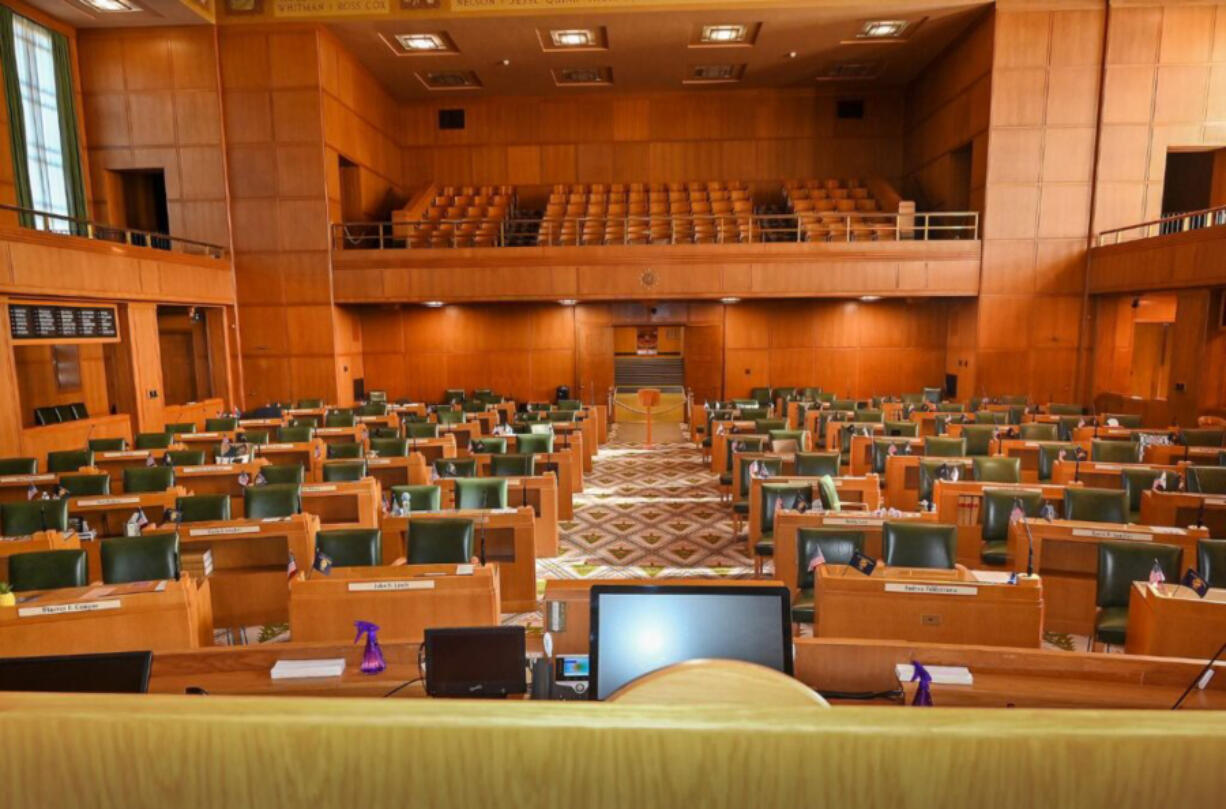Oregon lawmakers will have hundreds of millions of dollars to spend over the next year after another positive economic forecast released Wednesday morning.
Lawmakers were eagerly anticipating the forecast, which came three days into the 35-day legislative session, as they fine-tune plans to spur housing production, boost homeless shelters and expand addiction treatment.
The forecast projects an ending balance of $1.66 billion in June 2025 based on current figures, or $1.34 billion assuming a transfer to the state’s rainy day fund. Sen. Elizabeth Steiner, the Portland Democrat who co-chairs the budget-writing Joint Ways and Means Committee, told the Capital Chronicle via text Wednesday that she was still parsing the numbers to determine just how much lawmakers can afford to spend in the current legislative session.
There are plenty of demands for that money. Gov. Tina Kotek is seeking $500 million to spur housing production and help the state meet her goal of building 36,000 homes annually, nearly double the number it’s built in recent years. Her plan will have its first public hearing on Thursday. She also wants another $100 million for homelessness, including $65 million to keep existing shelters operating and $35 million for rent assistance.
“It’s harder than ever for Oregonians to afford to live here, which is why we must take bold action on affordable housing,” Kotek said in a statement following the revenue forecast. “I look forward to working with legislators this session to make progress for Oregonians.”
Steiner said Monday lawmakers need to come up with a minimum of $78 million for a low-income child care program that instituted a waitlist last fall, while advocates say the true cost may be as high as $221 million.
Lawmakers working on expanding addiction treatment services haven’t yet shared how much they hope to spend, but growing those services will easily reach tens of millions of dollars, if not more. Just one aspect of the multifaceted plan, expanding transitional housing for people in recovery, carries a tentative price tag of $30 million.
Legislative leaders responded to the forecast with bipartisan cries for using the available money to spur housing and address addiction, though Republicans raised alarms about stagnant population growth. Oregon’s finances are stable now, but the state’s economy relies on new workers moving to Oregon as older workers retire.
“Republicans and Democrats are united in our commitment to increase housing supply and homelessness supports, helping families and individuals struggling with addiction and investing in Oregon’s future,” House Speaker Dan Rayfield, D-Corvallis, said in a statement. “This stable forecast coupled with a decade of good budgeting gives us the certainty and resources we need to invest in the priorities Oregonians care about most.”
Senate President Rob Wagner, D-Lake Oswego, added that the Legislature can and will allocate more money toward housing affordability, homelessness and the addiction crisis.
“There are never enough resources for all of the state’s needs, but we are committed to using tax dollars wisely to address issues Oregonians are facing every day,” he said.
Senate Minority Leader Tim Knopp, R-Bend, described the flat population as a warning sign for the future of the state. The forecast calls for about a 0.6% population increase annually over the next decade, lower than Oregon has had since the Great Recession.
“It is critically important that we leave behind status-quo policies and pursue pro-job policies that will make Oregon an attractive place to live, work and raise a family,” he said. “We can do that this session by putting all our efforts into boosting housing production, lowering the cost of living, and addressing drug addiction, homelessness and crime.”
House Minority Leader Jeff Helfrich, R-Hood River, pointed to the slowing population growth as a sign current policies aren’t working.
“Record revenues followed by record inflation is to be expected,” he said. “People leaving, or staying away from, Oregon isn’t. It’s no surprise; people want to feel safe in their communities, don’t want to constantly deal with the effects of an unrestrained drug trade, and even if they could ignore all of that, our housing market is unaffordable for most. Oregon needs to reverse course, and fast.”
Oregon Capital Chronicle focuses on deep and useful reporting on Oregon state government, politics and policy. We help readers understand how those in government are using their power, what’s happening to taxpayer dollars, and how citizens can stake a bigger role in big decisions.



